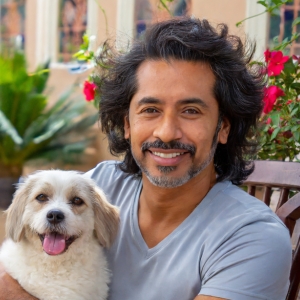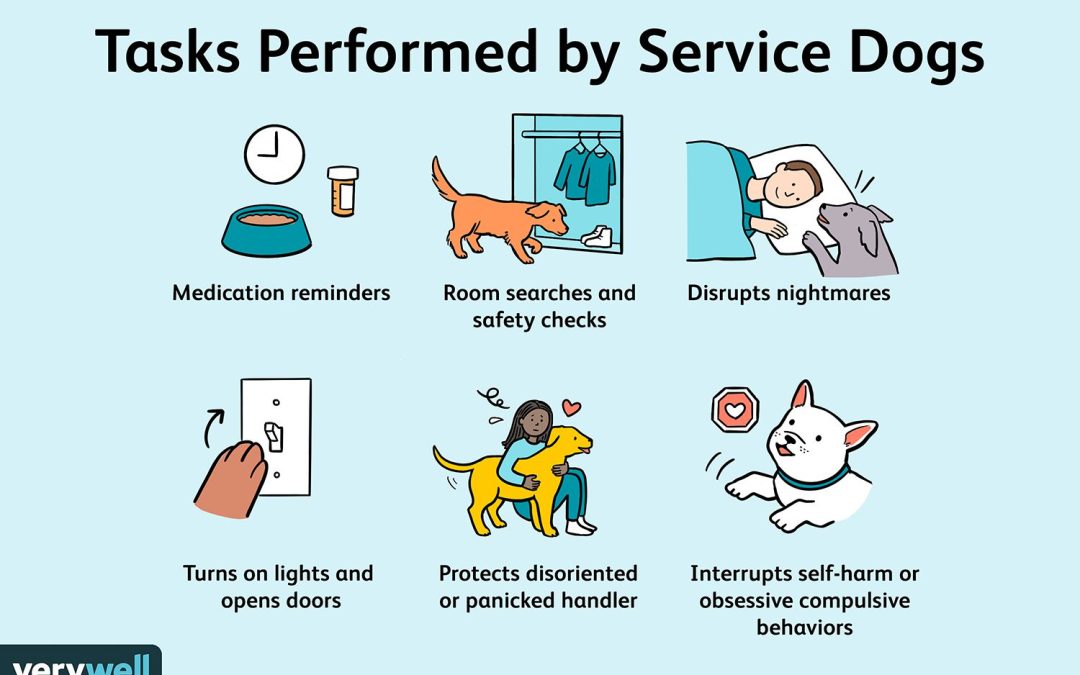To train a therapy dog for anxiety, start with basic obedience training and gradually introduce exposure to various environments and situations that trigger anxiety. Consistent positive reinforcement is key.
Training a therapy dog for anxiety involves nurturing a strong bond between the dog and the handler, teaching calming techniques, and desensitizing the dog to stressors. Additionally, incorporating tasks specific to anxiety, such as deep pressure therapy or alerting behaviors, can further enhance the dog’s ability to provide emotional support.
By following a structured training plan tailored to the individual needs of the dog and the client, you can help create a reliable and effective therapy dog for anxiety relief.

Credit: pettable.com
The Importance Of Therapy Dogs
Therapy dogs play a crucial role in supporting individuals dealing with anxiety.
They provide comfort, companionship, and emotional support to those in need.
Training a therapy dog for anxiety involves teaching obedience skills and emotional intelligence.
This process helps the dog understand human emotions and respond appropriately.
The bond between a therapy dog and their owner can have a profound impact on mental health.
Being with a well-trained therapy dog can reduce anxiety and promote relaxation.
Choosing The Right Dog Breed
Traits Ideal for Therapy Work: When selecting a therapy dog for anxiety, it’s essential to consider certain traits that are well-suited for this type of work. These may include calmness, friendliness, empathy, and an ability to bond with humans. A therapy dog should also exhibit a gentle and patient nature and have the ability to remain calm in stressful situations. Medium-sized to large breeds often work well as therapy dogs due to their size and ability to physically assist their owners. Additionally, dogs with a low tendency to bark or be easily startled may be preferred, as they can provide a comforting and soothing presence to individuals with anxiety.
Considerations for Anxiety Support: In addition to breed traits, there are specific considerations to keep in mind when training a therapy dog for anxiety support. These include socialization to various environments, people, and other animals, as well as exposing the dog to different sounds and sensations to help them remain calm in any situation.
Positive reinforcement training techniques can be highly effective in teaching the dog how to appropriately respond to anxious behaviors. It’s crucial to take into account the specific needs and preferences of the person with anxiety when choosing a therapy dog, as a strong bond between the individual and the dog is essential for successful therapy work.
Basic Training For Therapy Work
Training a therapy dog for anxiety requires a solid foundation in basic obedience and strong socialization skills. Obedience training teaches a dog to respond to commands, such as sit, stay, and come. This not only builds their confidence but also establishes them as well-behaved companions.
Socialization is equally important as it exposes the dog to various people, places, and situations, helping them become comfortable and calm in different environments. It’s crucial to introduce them to different surfaces, sounds, and experiences to ensure they can handle the unpredictable nature of therapy work.
Specialized Anxiety Training
To train a therapy dog for anxiety, it is crucial to first recognize the common symptoms of anxiety in individuals. Once you have identified these symptoms, you can begin teaching your dog calming techniques to help alleviate anxiety episodes.
Certification And Registration
Certification and Registration:
Therapy dogs must undergo behavioral and obedience training.
They should pass a therapy dog test for temperament and behavior.
The registration process involves submitting necessary documents and fees.
Dogs need to be at least one year old to be certified.

Credit: www.akc.org
Bonding And Trust Building
To train a therapy dog for anxiety, focus on bonding and trust building. Spend quality time with the dog, engage in positive reinforcement training, and create a safe and nurturing environment. Building a strong bond will help the dog develop trust, leading to better support for individuals coping with anxiety.
| Bonding and Trust Building |
| – Spend quality time with your dog to build a strong bond. |
| – Engage in activities that your dog enjoys to strengthen your connection. |
| – Be consistent with your training and interactions for trust. |
| – Use positive reinforcement to encourage good behavior. |
| – Establish trust by being calm and reassuring in anxious situations. |
Working As A Therapy Dog Team
Training a therapy dog for anxiety involves specific preparation for therapy sessions and fostering effective communication with patients. As a therapy dog team, it’s essential to create a calm and comforting environment, ensuring that both the dog and handler are well-prepared for their role. Preparing for therapy sessions includes familiarizing the dog with various environments and teaching them to remain focused in distracting situations.
Effective communication with patients requires the handler to observe patient cues and respond appropriately in a gentle and comforting manner, ensuring the patient feels at ease. Through consistent training and positive reinforcement, a therapy dog can provide valuable support and comfort to individuals struggling with anxiety.

Credit: m.youtube.com
Self-care For Therapy Dog Handlers
Training and working with a therapy dog can be rewarding, but it also comes with its own set of challenges. As a handler, it’s important to prioritize self-care to effectively support your dog and those you serve. Managing stress is crucial, as handling a therapy dog can be emotionally demanding. Make sure to set aside time for relaxation and engage in activities that help you unwind. Setting boundaries is essential, both with clients and in your personal life, to prevent burnout and maintain a healthy work-life balance.
Additionally, compassion fatigue is a common risk among therapy dog handlers. To address this, it’s important to recognize the signs of compassion fatigue and seek support when needed. This may involve reaching out to fellow handlers, attending support groups, or seeking guidance from a therapist.
Remember, caring for yourself is just as important as caring for your therapy dog. Taking the time to prioritize your own well-being will not only benefit you but will also enhance your ability to provide effective support and care to those in need.
Frequently Asked Questions
Can I Train My Own Anxiety Service Dog?
Yes, you can train your own anxiety service dog. However, it requires dedication, consistent training, and patience. It’s essential to ensure your dog behaves appropriately in public places. Seek professional guidance to meet specific requirements for a service dog.
How Do I Get My Dog To Be A Therapy Dog For Anxiety?
To get your dog to be a therapy dog for anxiety, train it with a professional organization specializing in therapy dogs.
How To Train A Dog With Severe Anxiety?
To train a dog with severe anxiety, start with positive reinforcement. Gradually expose the dog to triggers in a controlled environment. Use desensitization techniques and reward calm behavior. Consult a professional trainer or behaviorist for guidance. Ensure a safe and nurturing environment for the dog.
How Long Does It Take To Train A Dog To Be A Therapy Dog?
Training a dog to be a therapy dog can take several months. It depends on the individual dog’s personality, breed, and training method used. Consistency, positive reinforcement, and socialization are key to success.
Conclusion
Training a therapy dog for anxiety can greatly improve mental health. With patience and consistency, bonding with your dog will strengthen. Incorporate positive reinforcement techniques into your training routine. Remember, the journey of training is as rewarding as the outcome.
Take small steps and celebrate progress along the way.

Hello, I’m Ethan Mitchell. My passion is dog training and behavior enthusiasts. With years of experience working with various breeds, my goal at Dog Advisor Pro is to help dog owners build strong, loving relationships with their furry friends through effective training techniques. Understanding a dog’s behavior is the key to harmonious companionship. I am dedicated to sharing practical training tips that improve the lives of dogs and their owners.


